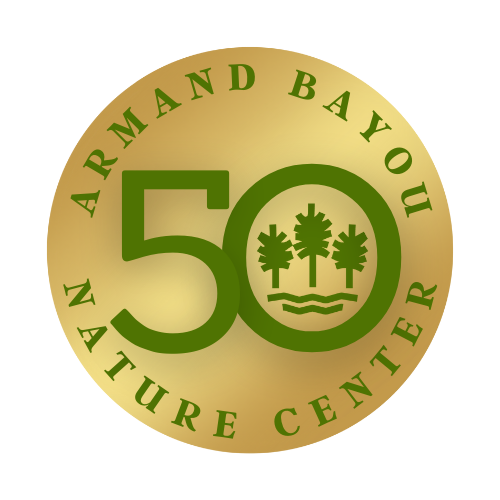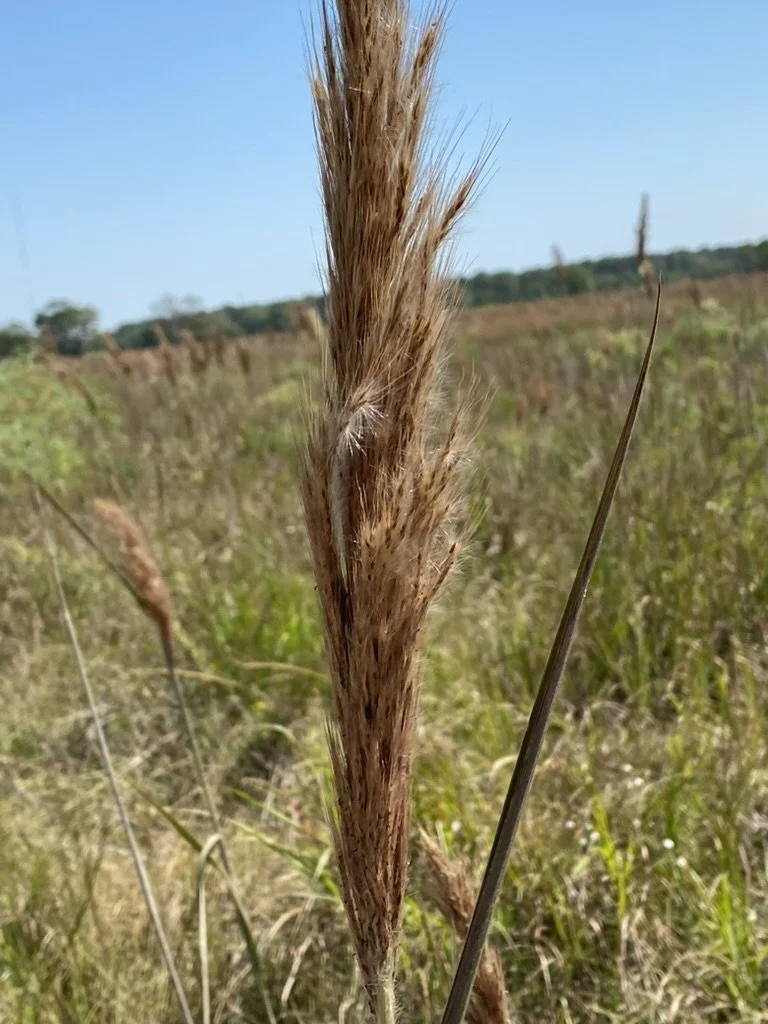Sugarcane plumegrass (Saccharum giganteum)
Written by ABNC Volunteer David Ozro Woods. David is a PhD student of Ecology & Evolution at the University of Houston. He has a bachelor's degree in Natural Resources: Conservation Biology with minors in Marine Science and Plant Science.
The characteristic flower of sugarcane plumegrass growing in the prairie at ABNC. (Photo credit: David Ozro Woods)
A field of sugarcane plumegrass towering above the rest of the prairie at ABNC. This likely indicates a slightly lower-lying, wetter area of the prairie as sugarcane plumegrass prefers moist soil. (Photo credit: David Ozro Woods)
In some areas of coastal prairie this towering giant looms over the sea of grass, and walking through the prairie it is fairly easy to spot. Sugarcane plumegrass grows to between 6 and 10 feet tall and prefers moist soils that are typical of lower-lying areas in the prairie. It is thus an indicator species of where wetlands and wetter soils tend to be.
Sugarcane plumegrass provides food for birds in the form of seeds and also helps to provide them with cover. This grass is also the host plant of the Clouded Skipper butterfly (Lerema accuis).
Further reading:
https://www.wildflower.org/plants/result.php?id_plant=SAGI
https://plants.ces.ncsu.edu/plants/saccharum-giganteum/


